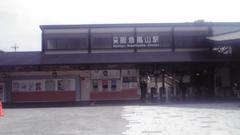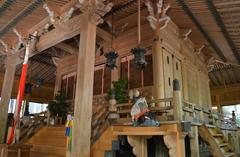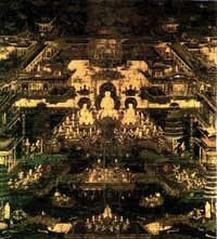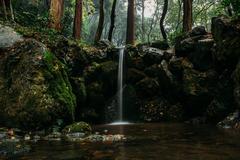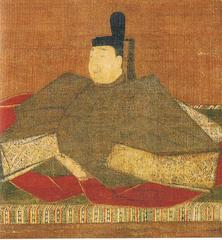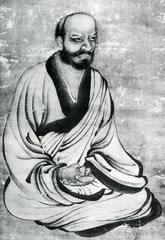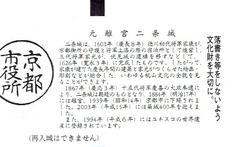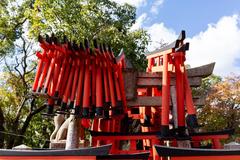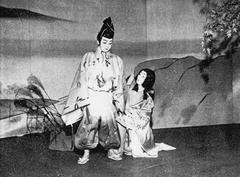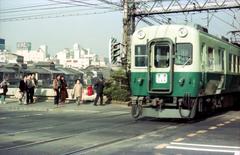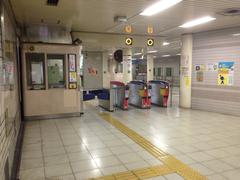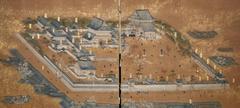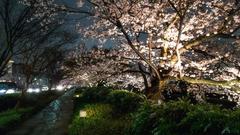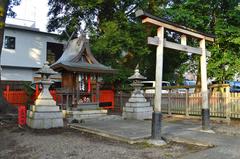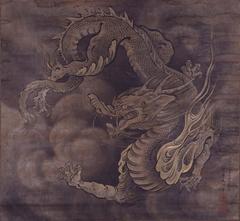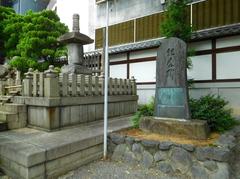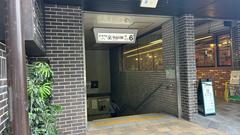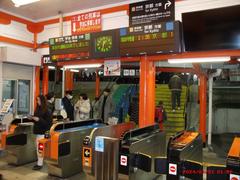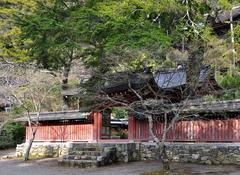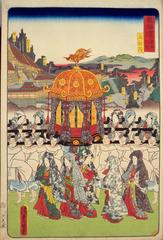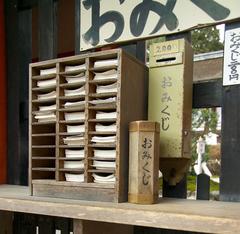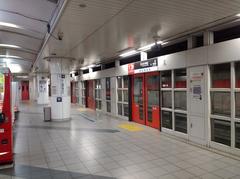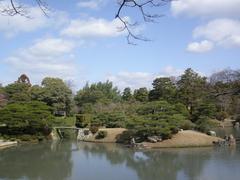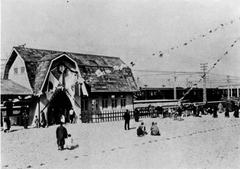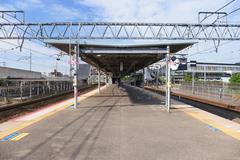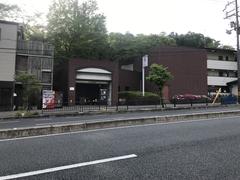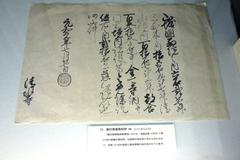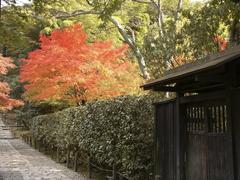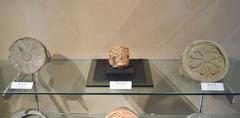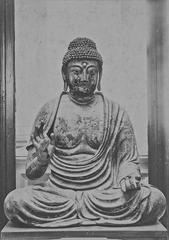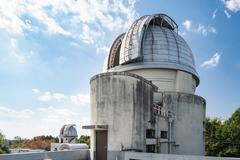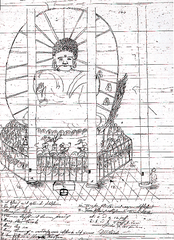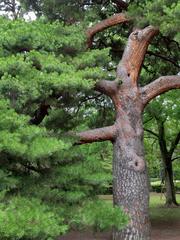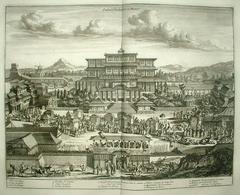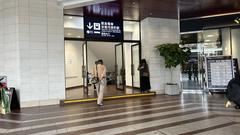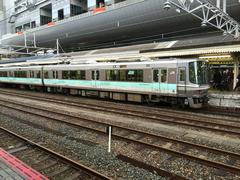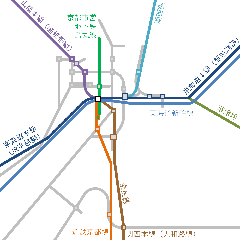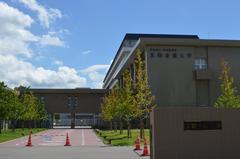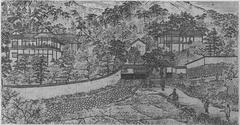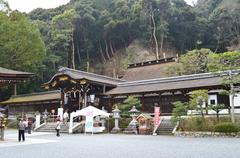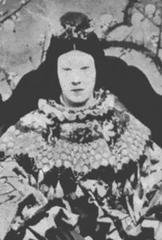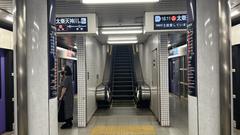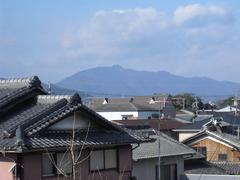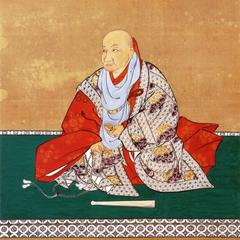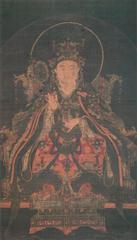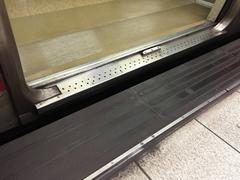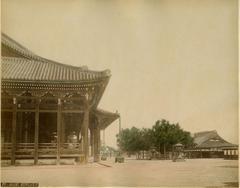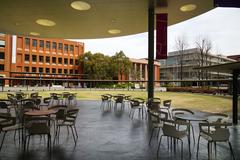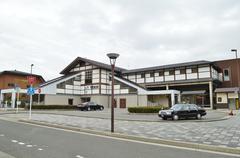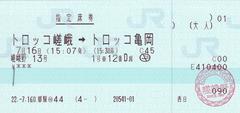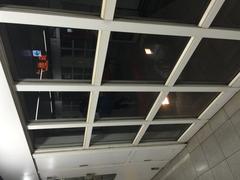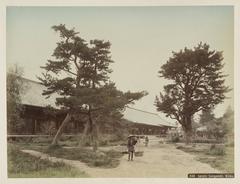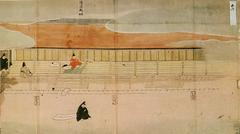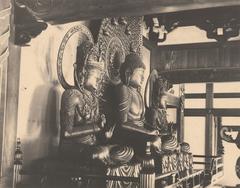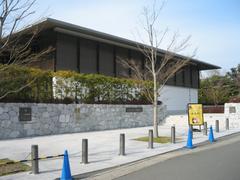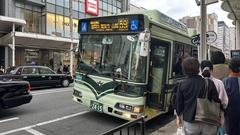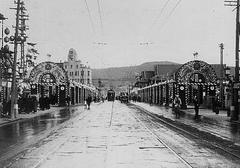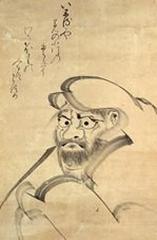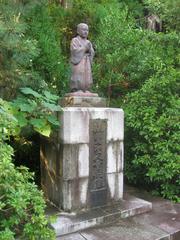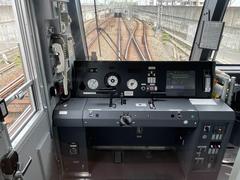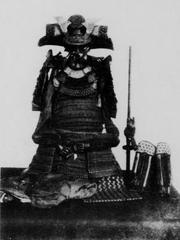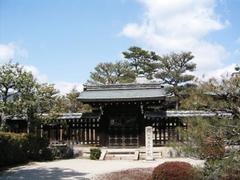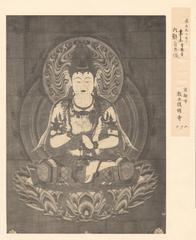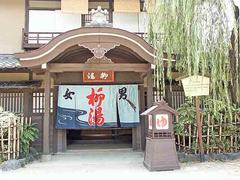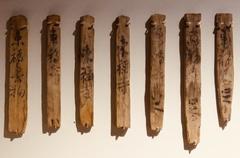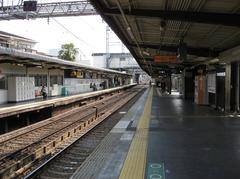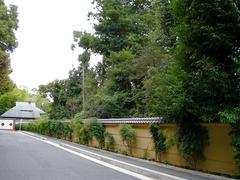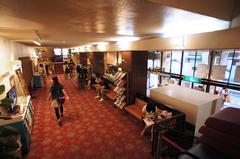
Kyoto Art Center: Visiting Hours, Tickets, Accessibility, and Historical Significance
Date: 04/07/2025
Introduction
Located in the heart of Kyoto, the Kyoto Art Center is a vibrant institution that seamlessly blends the city’s rich historical legacy with a dynamic contemporary arts scene. Set within the former Meirin Elementary School—a building established in 1869 during the Meiji era and recognized as a Tangible Cultural Property of Japan—the center stands as a testament to Kyoto’s enduring commitment to cultural preservation and creative innovation. Visitors to the Kyoto Art Center enjoy not only exceptional exhibitions and performances but also the unique opportunity to explore an architectural gem that embodies both tradition and progress (Kyoto Art Center official site; Wikipedia; Art Tourism).
This comprehensive guide provides essential information on the center’s history, architectural significance, programs, visiting hours, ticketing, accessibility, and practical tips—ensuring an enriching and seamless experience for every guest.
Historical Background & Architectural Significance
Origins and Evolution
The Kyoto Art Center is housed in the former Meirin Elementary School, a pioneering educational institution founded by Kyoto citizens in 1869. The school played a vital role in the city’s modernization and operated for more than a century until its closure in 1993. In 2000, the building was revitalized as the Kyoto Art Center, reflecting the city’s vision to create a platform for both traditional and contemporary artistic expression (Kyoto Art Center official site; Wikipedia).
Cultural Recognition and Preservation
In 2008, the building’s north, south, and west wings, along with its gate and wall, were designated as Tangible Cultural Properties of Japan. This status underscores the architectural and historical significance of the structure, which features preserved elements such as wooden floors, original classroom doors, and wide corridors. The design—by architect Toshikatsu Ienari—showcases early Showa period reinforced-concrete construction, marrying durability with a bright, inviting atmosphere (Kyoto Art Center official site; Art Tourism).
Adaptive Reuse
The transformation of the school into an art center was carried out with minimal intervention, preserving the building’s character while adapting former classrooms into studios, galleries, and rehearsal spaces. Additional facilities include a Japanese-style hall, tea room, a curated library, and the Maeda Coffee Meirin café—ensuring that the building remains both a historical landmark and a living cultural venue (Kyoto Art Center official site).
Programs and Artistic Offerings
Artist-in-Residence Program
The Kyoto Art Center’s internationally recognized Artist-in-Residence Program supports both emerging and established artists from Japan and abroad. The program alternates annually between visual and performing arts, offering artists the chance to immerse themselves in Kyoto’s unique cultural environment. Residents receive accommodation, studio access, and professional support, fostering cross-cultural dialogue and creative exploration (Res Artis; KAC News).
Contemporary and Traditional Arts
- Exhibitions: Two prominent “white cube” galleries host innovative exhibitions by Japanese and international artists, emphasizing the intersection of Kyoto’s traditions and contemporary practices (KAC Program).
- Performing Arts: The center supports dance, music, and theater, including the annual Kyoto International Dance Workshop Festival and the KYOTO EXPERIMENT festival, which present experimental and avant-garde works (KAC Program).
- Traditional Arts: Programs such as “継ぐこと・伝えること” introduce visitors to modern approaches to traditional performing arts. The Traditional Theatre Training (T.T.T.) program provides instruction in classical forms like Noh and Kyogen (KAC Program).
Community Engagement
Workshops, artist talks, and tea ceremonies (Meirin Chakai) encourage public participation and dialogue with artists. The center’s library and information room offer free access to a curated arts and culture collection, making it a valuable resource for visitors and researchers (KAC Visit; Japan Experience).
Special Events
Notable events include Nuit Blanche KYOTO (a night festival celebrating Kyoto-Paris ties) and the Meirin Record Club (a unique music listening event), among others (KAC Program).
Visitor Information
Visiting Hours
- Standard Hours: Open Tuesday to Sunday, 10:00 AM – 6:00 PM.
- Closures: Closed Mondays (or the following day if Monday is a national holiday), New Year holidays, and for certain special closures.
- Note: Some facilities or exhibitions may have extended or separate hours (e.g., up to 10:00 PM during special events). Always check the official website before visiting.
Admission & Tickets
- General Admission: Free entry to most exhibitions and facilities.
- Ticketed Events: Some special exhibitions, performances, or workshops require tickets or reservations (typically ¥500–¥2,000). Advance booking is recommended for popular events and can be arranged via the official website or at the information desk.
Location & Access
- Address: 546-2 Yamabushiyama-cho, Nakagyo-ku, Kyoto 604-8156, Japan.
- Transport:
- By Subway: 5-minute walk from Shijo Station (Karasuma Line) or Karasuma Station (Hankyu Kyoto Line).
- By Bus: Nearby stops at Shijo Karasuma.
- By Taxi/Bicycle: Taxis are widely available; bicycle parking is provided.
Facilities & Services
- Information Desk: Multilingual staff and brochures available.
- Wi-Fi: Free throughout the center.
- Café & Shop: Local Kyoto ingredients and unique souvenirs.
- Restrooms: Accessible facilities on each floor.
- Lockers: Coin-operated for personal belongings.
- Library: Free access to arts and culture literature (KAC Visit).
- Accessibility: Ramps, elevators, wide corridors, and accessible restrooms ensure comfort for all visitors; some historic areas may have limited access.
Guided Tours & Workshops
- Guided Tours: Offered occasionally and by reservation; provide in-depth insights into the building’s history and current exhibitions.
- Workshops: Hands-on experiences in visual arts, crafts, and performing arts; open to all ages and skill levels (KAC Program).
Visitor Experience
Atmosphere
The preserved ambiance—original wooden floors, nostalgic classrooms, and tranquil courtyards—creates a unique backdrop for artistic inspiration and leisurely exploration. The library and café, set in former classrooms, are popular spots for relaxation.
Accessibility for All
- Wheelchair Access: Ramps, elevators, and accessible restrooms.
- Visual Impairment Support: Tactile floor indicators and accessible materials available.
- Family-Friendly: Stroller access, family rest areas, and child-friendly workshops.
Photographic Highlights
- The building’s reddish cream walls, Spanish-style roof tiles, and greenish-blue gutters.
- Interiors such as the nostalgic library, café, and exhibition galleries.
- Courtyard and seasonal events provide excellent photographic opportunities.
- Note: Photography may be restricted during certain exhibitions; check signage or staff guidance.
Nearby Attractions
- Nijo Castle: A UNESCO World Heritage Site within a 15-minute walk.
- Nishiki Market: Kyoto’s famous “Kitchen,” 10 minutes east.
- Gion District: Historic geisha area, 20 minutes southeast.
- Kyoto International Manga Museum: Also nearby.
- Shijo-Kawaramachi: Shopping and dining hub.
- Other landmarks: Temples, shrines, and the Samurai & Ninja Museum (Kyoto Museums).
Practical Tips & Seasonal Considerations
- Best Times to Visit: Spring for cherry blossoms, autumn for vibrant foliage, and winter for quieter experiences.
- Peak Hours: Visit in the morning or late afternoon for smaller crowds.
- Cultural Etiquette: Maintain quiet in galleries; remove shoes for certain workshops.
- COVID-19 Measures: Mask-wearing is optional but recommended indoors; sanitizers provided.
- Budgeting: Many programs are free; special events and café meals are reasonably priced.
Frequently Asked Questions (FAQ)
Q: What are the Kyoto Art Center visiting hours?
A: Standard hours are 10:00 AM to 6:00 PM, Tuesday to Sunday. Check the official website for updates.
Q: Is general admission free?
A: Yes, entry to most areas is free. Some events or exhibitions require tickets.
Q: Is the center wheelchair accessible?
A: Yes, with ramps, elevators, and accessible restrooms.
Q: Are guided tours available?
A: Yes, they can be arranged in advance or during special programs.
Q: Can I take photographs inside?
A: Allowed in public areas, unless otherwise indicated.
Q: How do I get there?
A: 5 minutes on foot from Shijo or Karasuma Stations; see access details above.
Q: Are workshops available?
A: Yes, advance registration is recommended for popular sessions.
Conclusion
The Kyoto Art Center is far more than a historic landmark; it is a living institution that embodies Kyoto’s harmonious blend of tradition and innovation. With free admission to most exhibits, a diverse program of events, and a central location near major attractions, it is an essential destination for anyone seeking to experience Kyoto’s vibrant arts scene. Plan ahead by checking visiting hours, booking special programs or tours, and exploring the city’s rich cultural surroundings.
For the latest information on exhibitions, events, and tickets, visit the Kyoto Art Center official website. Download the Audiala app for personalized travel guides and stay connected through social media for updates and inspiration.



